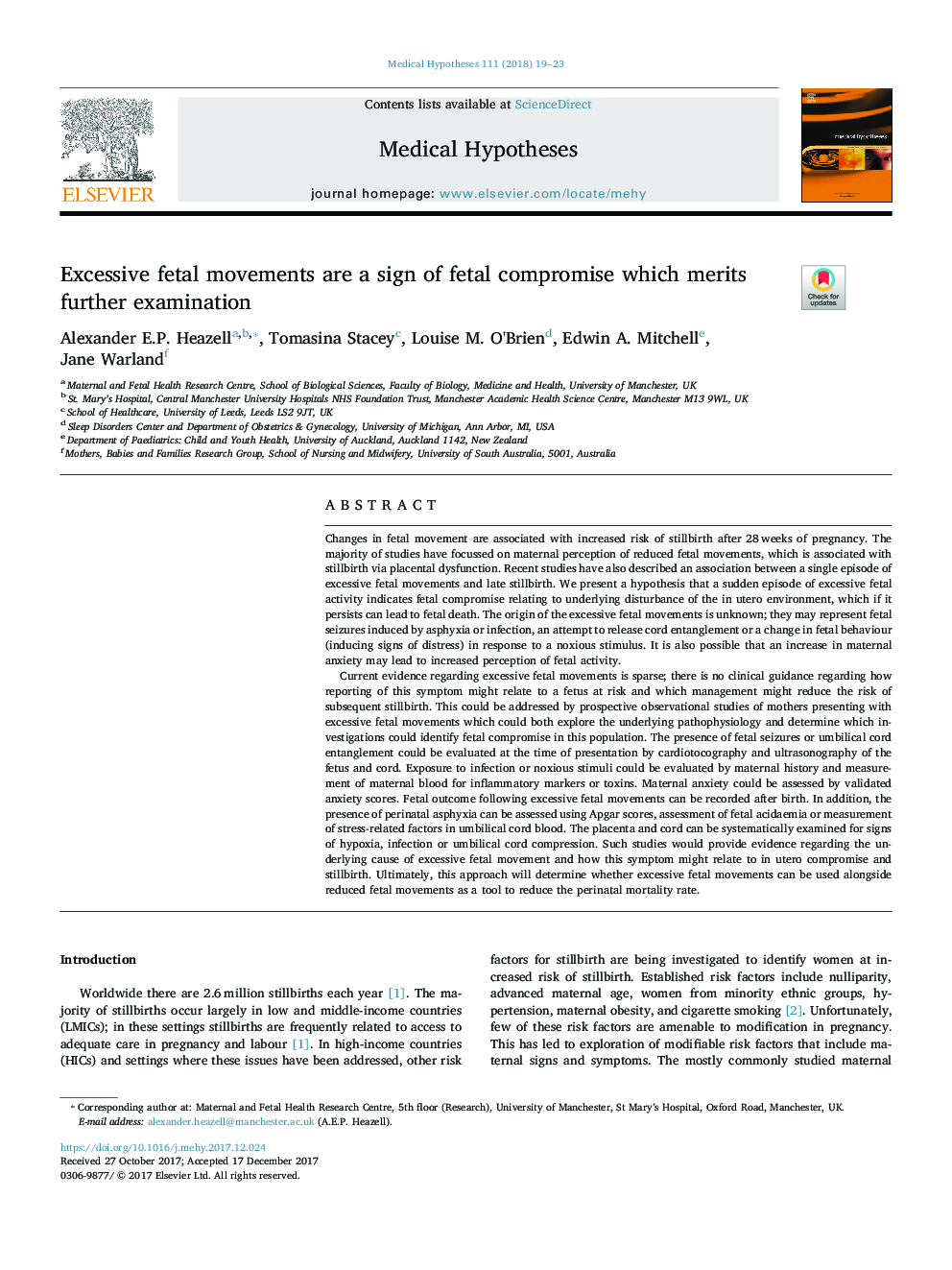| کد مقاله | کد نشریه | سال انتشار | مقاله انگلیسی | نسخه تمام متن |
|---|---|---|---|---|
| 8515991 | 1556534 | 2018 | 5 صفحه PDF | دانلود رایگان |
عنوان انگلیسی مقاله ISI
Excessive fetal movements are a sign of fetal compromise which merits further examination
ترجمه فارسی عنوان
جنین های بیش از حد جنین نشانه ای از سازش جنینی است که مورد بررسی قرار می گیرد
دانلود مقاله + سفارش ترجمه
دانلود مقاله ISI انگلیسی
رایگان برای ایرانیان
موضوعات مرتبط
علوم زیستی و بیوفناوری
بیوشیمی، ژنتیک و زیست شناسی مولکولی
زیست شناسی تکاملی
چکیده انگلیسی
Current evidence regarding excessive fetal movements is sparse; there is no clinical guidance regarding how reporting of this symptom might relate to a fetus at risk and which management might reduce the risk of subsequent stillbirth. This could be addressed by prospective observational studies of mothers presenting with excessive fetal movements which could both explore the underlying pathophysiology and determine which investigations could identify fetal compromise in this population. The presence of fetal seizures or umbilical cord entanglement could be evaluated at the time of presentation by cardiotocography and ultrasonography of the fetus and cord. Exposure to infection or noxious stimuli could be evaluated by maternal history and measurement of maternal blood for inflammatory markers or toxins. Maternal anxiety could be assessed by validated anxiety scores. Fetal outcome following excessive fetal movements can be recorded after birth. In addition, the presence of perinatal asphyxia can be assessed using Apgar scores, assessment of fetal acidaemia or measurement of stress-related factors in umbilical cord blood. The placenta and cord can be systematically examined for signs of hypoxia, infection or umbilical cord compression. Such studies would provide evidence regarding the underlying cause of excessive fetal movement and how this symptom might relate to in utero compromise and stillbirth. Ultimately, this approach will determine whether excessive fetal movements can be used alongside reduced fetal movements as a tool to reduce the perinatal mortality rate.
ناشر
Database: Elsevier - ScienceDirect (ساینس دایرکت)
Journal: Medical Hypotheses - Volume 111, February 2018, Pages 19-23
Journal: Medical Hypotheses - Volume 111, February 2018, Pages 19-23
نویسندگان
Alexander E.P. Heazell, Tomasina Stacey, Louise M. O'Brien, Edwin A. Mitchell, Jane Warland,
